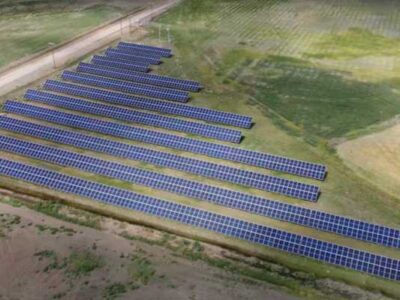THE NEW YORK TIMES: The Financial Alchemy That’s Choking SunEdison
SunEdison is not dead yet, but it is floundering. The immediate cause of its distress is the now-terminated agreement to acquire Vivint for $2.2 billion that was struck last July.
The highly leveraged deal flashed caution from the start. SunEdison agreed to acquire Vivint Solar, but could not afford to pay the $2.2 billion. Instead, the deal consisted of cash and SunEdison common stock. SunEdison did not have the cash so it arranged to borrow $500 million from Goldman Sachs Bank USA. That was not enough so SunEdison also agreed to issue $350 million in convertible notes to Vivint holders, debt instruments that SunEdison would pay out later at 2.25 percent interest. This type of self-financed debt is the last resort of acquirers.
But it was still not enough. SunEdison had also engaged in a bit of prior financial engineering, creating two “yieldcos.” A yieldco is a bit like a master limited partnership, or M.L.P., and rides the Wall Street trend of trying to disaggregate assets while juicing returns and trying for a bit of tax arbitrage at the same time. In other words, like M.L.P.s that are now piling up as dead carcasses in the oil depression, they probably should not exist in this form. Yieldcos are newly created public companies that purchase energy assets, such as solar generation plants, from a parent company. The parent company then focuses on building these assets and can then offload them to the yieldco. The yieldco will then run the asset with the intent to create a steady stream of dividend payments to holders. And because the yieldco is a corporation and not a partnership, it can attract a wider array of investors. Continue to the entire article
FORBES: SunEdison Offers Another Excuse For Its Missing Financials
The troubling timeline behind the collapse of renewable energy developer SunEdison just became much more concerning.
SunEdison says it will continue to delay an overdue annual 10-k filing with the Securities and Exchange Commission, but for new reasons. The company said on Wednesday it has found material weaknesses in its internal controls, mostly as a result of what it says are “deficient information technology controls in connection with newly implemented systems” that govern its accounting.
These new control issues seem to come on top of potential liquidity problems the company revealed weeks ago. On Feb. 29, SunEdison delayed its 10-k filing due to allegations made by former executives on the accuracy of the company’s financial position. An audit committee on SunEdison’s board, in consultation with outside advisors and counsel opened an investigation, which it warned could cause a reassessment of the company’s liquidity and its overall financial standing. This revelation precipitated an overwhelmingly negative chain of events in March that now puts the company within the realm of collapse. (To date, SunEdison says it has not identified any material misstatements of previously reported results) Continue to the entire article
USA TODAY: SunEdison identifies ‘weaknesses’ in accounting
Renewable power firm SunEdison warned Wednesday that it had discovered problems in its accounting processes that required it to delay its annual stockholders report. The news dealt a sharp blow to the company’s stock (SUNE), which fell 15.5% in pre-market trading before recovering somewhat. Shares were down 6.2% at 12:13 p.m. but rallied later to close unchanged at $2.08.
SunEdison said in a statement that it had identified “material weaknesses in its internal controls over financial reporting.” The Maryland Heights, Mo.-based company blamed the issue primarily on “deficient information technology controls in connection with newly implemented systems.” A SunEdison spokesman declined to elaborate on the issue.
The disclosure comes about two weeks after the company said the Audit Committee of its Board had launched an investigation into the “accuracy of the company’s anticipated financial position.” Continue to the entire article
NASDAQ: 3 Things SunEdison Inc. Really Has to Show Investors – Soon
SunEdison Inc. still hasn’t released its 2015 annual report, delaying for a second time due to what it described as “material weakness” in its internal financial reporting controls. For that reason, we don’t know exactly where the company stands or how it’s performing against its own, newly formed, strategic plans.
When we do hear from SunEdison about the fourth quarter of 2015 and the start of 2016, here are three questions we have to hear satisfactory answers for — or the company will be in deep trouble.
Can SunEdison sell projects for a profit?
When SunEdison laid out its financial plans for 2016, it assumed it would be able to sell the renewable energy projects it builds to third parties for a 17% gross margin. Operating expenses were also forecast to decline to $600 million per year. If those two assumptions proved accurate, it could build 3.5 GW of projects a year, sell them, and break even on operations (we’ll leave out financing costs for now). Continue to the entire article















Comments